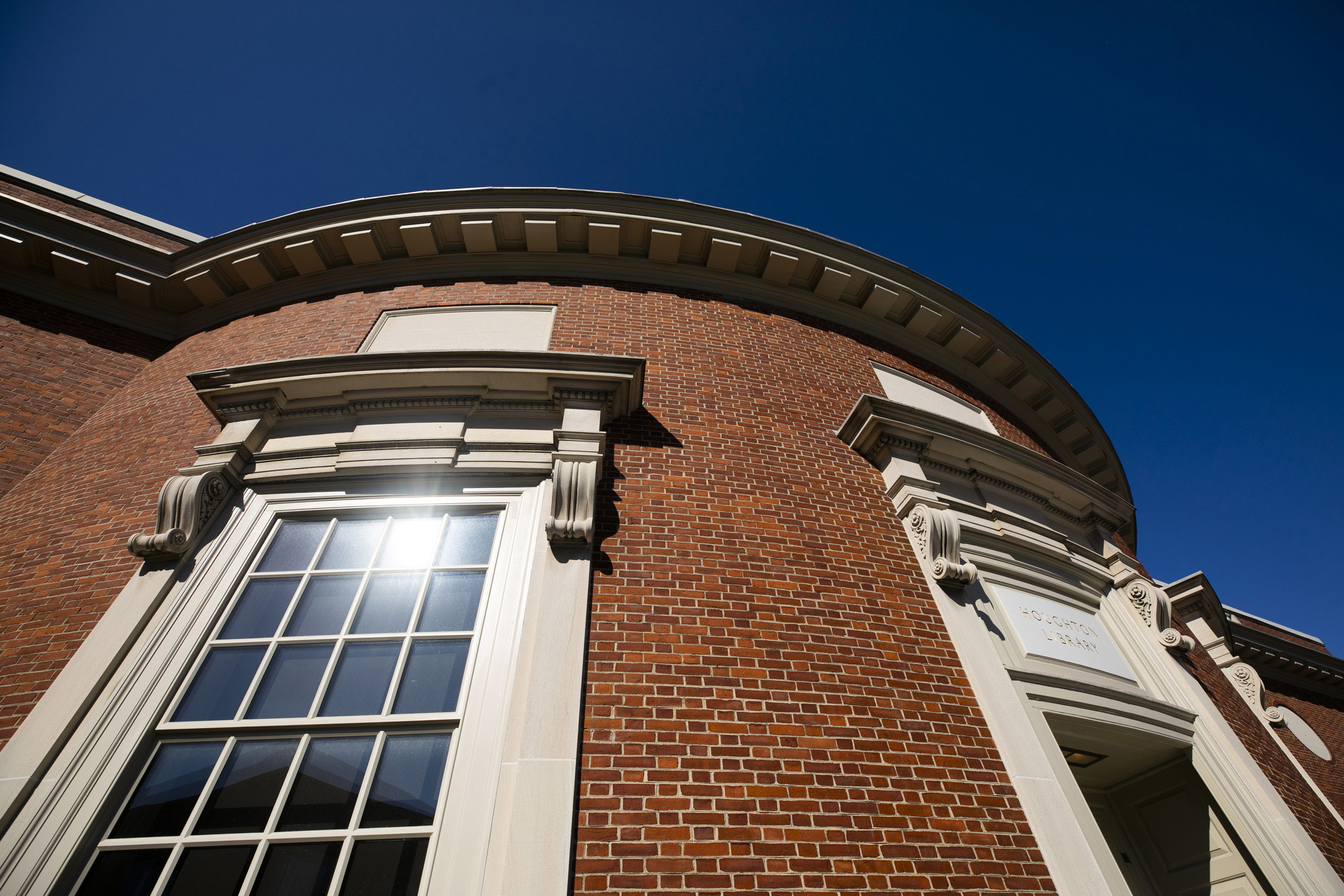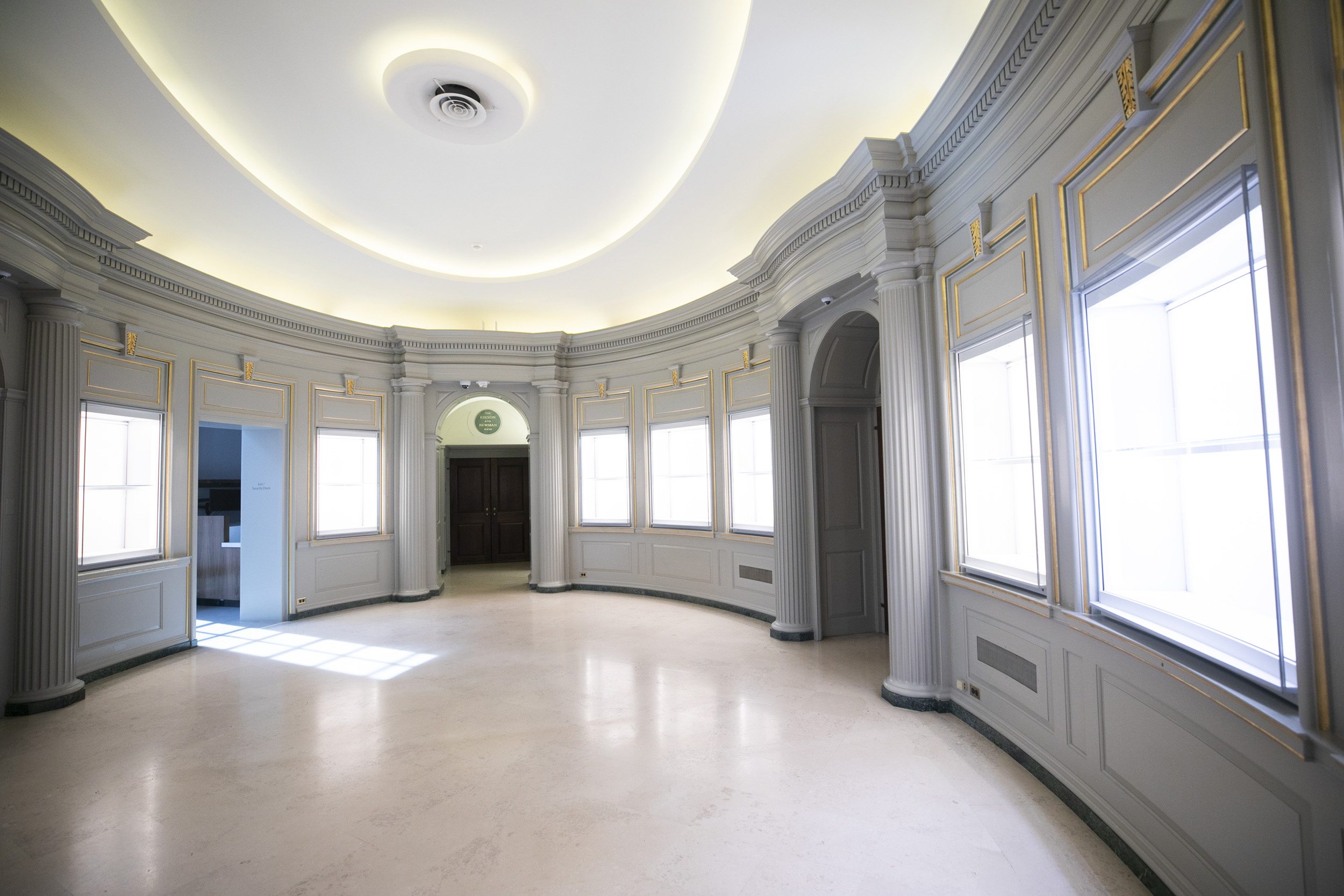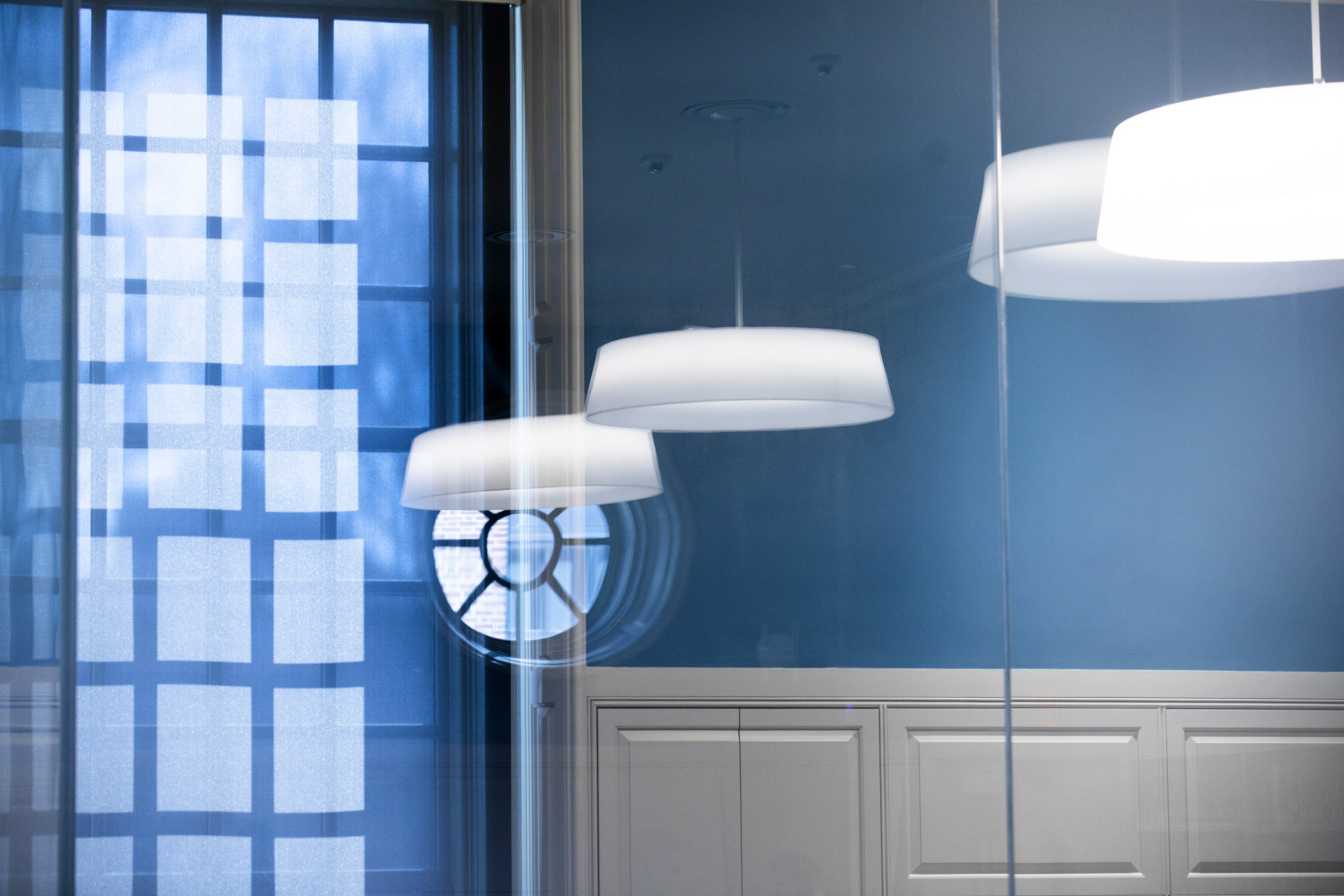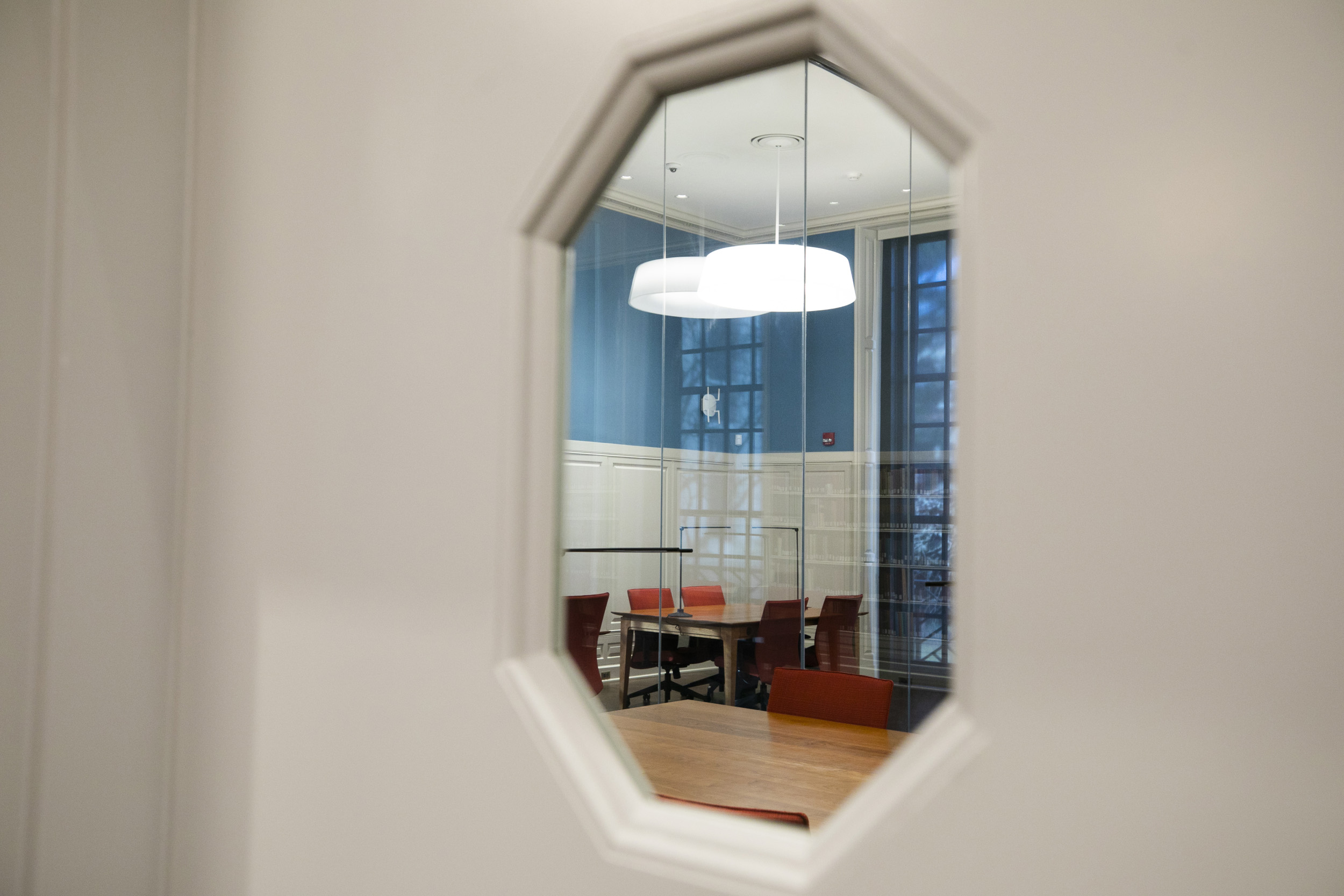
In August 2019, Houghton Library closed for a year-long renovation. The goal of the project was to make the building more accessible and welcoming while enhancing research and teaching spaces.
Photos by Stephanie Mitchell/Harvard Staff Photographer
New, improved, and almost open
Houghton Library ready to welcome visitors as soon as it’s safe
In the newly renovated Houghton Library, the building’s original details now pair with modern enhancements. Sleek, lighted display cases line the walls of the freshly painted foyer, letting visitors easily engage with collection items. Large overhead lamps glow above gleaming wooden tables in the reading room, which boasts a new group study room to encourage collaborative work. An inviting plaza in front connects to wheelchair-accessible paths at the building’s entrance, and a new elevator, restrooms, and other features vastly improve the building’s physical accessibility.
The only missing piece is the library’s patrons and visitors — but when it is safe to reopen the building, they’ll find it more welcoming and accessible than ever before.
February marked the completion of Houghton Library’s 16-month project to renovate the world-renowned primary-source research center and teaching laboratory. The renovation was led by Ann Beha Architects in partnership with the Faculty of Arts and Sciences’ Office of Physical Resources and Planning.

While it’s hard not to be able to immediately share the renovated library with visitors, completing construction during the pandemic is still a milestone, said Tom Hyry, the Florence Fearrington Librarian of Houghton Library.
“The completion of the Houghton renovation represents a positive development during challenging times,” Hyry said. “The pandemic and the movement for racial justice have reinforced the direction the library is moving; to become a more welcoming, inclusive, and accessible institution in our collections, services, and programs, in addition to our building.”
Hyry said the pandemic provided an opportunity and imperative to enhance digital resources and virtual services, and library staff are eager to build on that.
“We’re excited to combine what we’ve learned in providing remote services and programs with a more modern physical environment when the library building reopens,” he said.
He added that he expects this combination “will lead to major improvements in our overall support for teaching, research, and community enrichment.”



Books inside the Edison and Newman Room are pictured. A window looks into the renovated Reading Room.
Beyond its use by primary-source researchers at many levels and in many disciplines, Houghton typically hosts nearly 300 class visits each year, along with public exhibitions and events that draw tens of thousands of visitors.
The original goal of the renovation was to modernize the library’s research and teaching facilities, expand its exhibition galleries, improve physical access to its spaces and holdings, and generally create a more inviting environment.
This goal was ultimately underscored by the closure of all library buildings due to the COVID-19 pandemic. The lack of physical access has clarified the library’s importance, explained University Librarian and Library Vice President Martha Whitehead.
“One of the things that’s been made clear over the last year is the importance of physical libraries as communal spaces of intellectual engagement,” said Whitehead. “This is certainly true of Houghton Library, where researcher access to unique primary sources and community-focused tours, exhibits, and events have been sorely missed during this public health crisis.”
“We want our physical spaces to feel warm and welcoming to all members of our community,” she added, “which is why I’m so glad we’ve invested in making Houghton more accessible to all.”


Screens over the windows minimize the light entering the lobby. Lockers for visitors’ belongings are pictured near the lobby.
The library renovations were made possible through generous donations from the Powder Mill Foundation, anonymous alumni donors, and philanthropist and bibliophile Peter J. Solomon ’60, M.B.A. ’63, and his wife, Susan Solomon. The Solomons’ donation of children’s literature and illustrations in 2018 sparked an effort to make Houghton more welcoming to the Harvard community and visitors alike. Their collections will be the first exhibition when the new library officially reopens.




